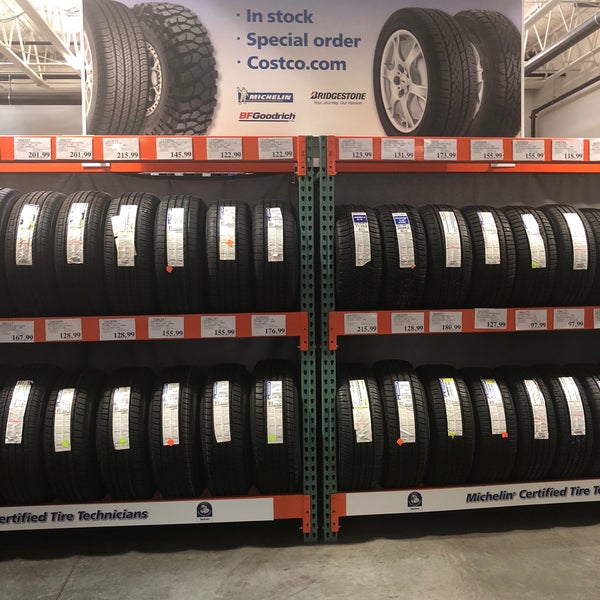Balancing means compensating for both the weight of the tire and wheel after the tire is mounted. A wheel is out of balance when one area is heavier or lighter than the rest. This can cause eccentric tread wear, vibration, and increase the stress on the front-end parts and may cause them to wear prematurely.
You should have your wheels balanced whenever a tire is replaced, when a balance weight is moved or removed, and whenever you purchase new tires. Of course, at the first sign of vibration or irregular tread wear, your car should be thoroughly checked for wheel balance and alignment, and for worn or broken mechanical parts.
To balance the wheel, your mechanic will use a balancing machine to determine where the heavy spots are. Weights are then attached to the exterior or interior of the wheel to counteract centrifugal forces acting on the heavy areas when the wheel is turning. This will eliminate vertical bouncing (static balance) and side-to-side wobble (dynamic balance).
Regular rotation helps extend the life of your tires, saving time and money in the long run. For rotation, each tire and wheel is removed from your vehicle and moved to a different position. This ensures that all of the tires wear evenly and last longer. If no period is specified in your vehicle owner's manual, tires should be rotated every 10,000 km to 12,000 km. If you have a full-size spare, it should be included in the rotation process.
Alignment generally refers to the adjustment of a vehicle's front and rear suspension parts. Proper alignment ensures that your vehicle handles correctly and will help increase the life and performance of your tires.
The alignment of your vehicle can be knocked out of adjustment from daily impacts such as potholes and railroad crossings or by more severe accidents.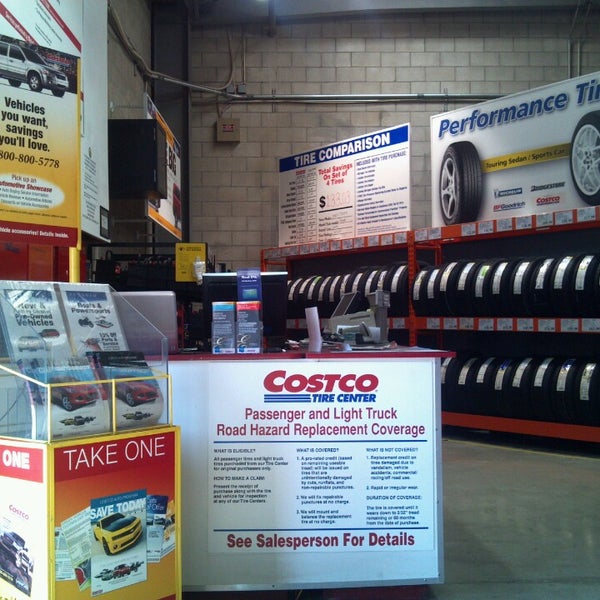 You should have the alignment checked if:
You should have the alignment checked if:
Alignment involves adjusting the angles of the wheels so that they are parallel to each other and perpendicular to the ground. The three main adjustments made in alignment are Camber, Caster, and Toe.
Camber is the angle of the wheel, in degrees, when viewed from the front of the vehicle. Positive camber is when the top of the wheel is leaning out from the center of the car. Negative camber is when the top of the wheel is leaning into the car. If the wheel leans too far from the center, uneven wear will occur. The camber angle is designed and adjusted per vehicle to keep the tires on the outside of a curve flat on the ground during a turn. If you have too much positive camber, your tires will wear on the outside.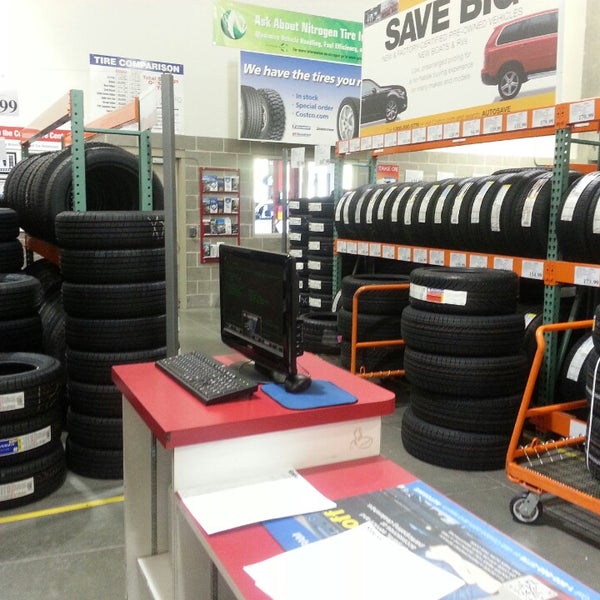 Too much negative camber will wear them on the inside. If there is too much of a difference between the camber settings on the front wheels, the vehicle will tend to pull sharply to one side.
Too much negative camber will wear them on the inside. If there is too much of a difference between the camber settings on the front wheels, the vehicle will tend to pull sharply to one side.
Caster is the forward or rearward tilt of the steering axis, measured from the top of the tire as viewed from the side. The axis is formed by extending an imaginary line through the upper and lower steering knuckles. The line extends through the upper and lower ball joints on vehicles with front control arms, and through the lower ball joint to the center of the strut mount on cars with struts.
If the angle is towards the rear of the vehicle, the wheel has positive caster. If the angle is too far to the front of the vehicle, the wheel has negative caster.
Caster is set so that your car will tend to go straight ahead. Positive caster has the effect of making your front wheels act as if your car was being pulled from the front so that they will line up behind the point of pull, like a child's pull toy.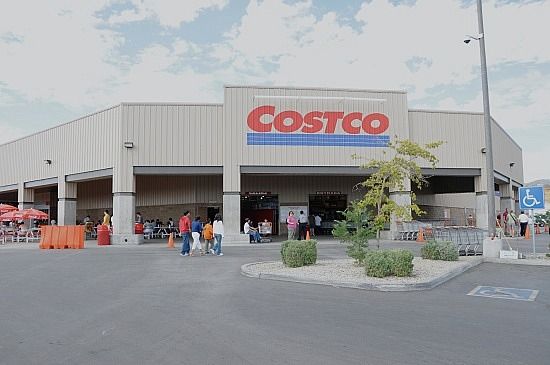
Another example is the caster wheel found on furniture or on some shopping carts. When you push a shopping cart equipped with caster wheels, it tends to roll in a straight line because the wheels line up or trail behind the point of pull. The greater the trail distance, the greater the tendency to roll straight ahead. The caster setting on a vehicle is adjustable in order to increase or decrease the effective trail distance.
Caster affects your vehicle's low-speed steering, high-speed stability as well as how well your vehicle drives in a straight line (on-center feel). Too little caster will cause your car to "wander" and make it feel unstable at high speeds. Too much caster causes hard steering and can also result in excessive road shock and shimmy. Caster does not affect tire wear.
Toe is the difference in the distance between the front of the tires and the back of the tires. Usually, tires are set so that they are parallel with each other. If the fronts of the tires are closer, the wheels are toe-in.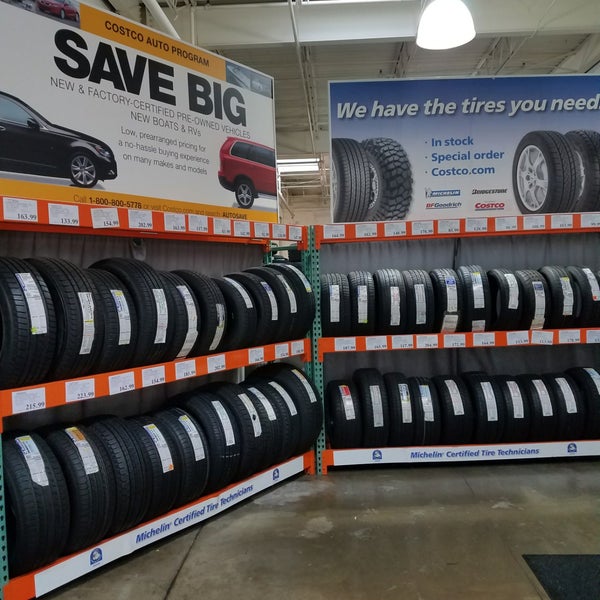 If the rears of the tires are closer, the wheels are toe-out.
If the rears of the tires are closer, the wheels are toe-out.
Toe settings affect the handling characteristics of a vehicle in turns. Toe-in introduces Understeer going into a curve and may make the vehicle feel like the back end is trying to come around to the front end. Toe-out introduces Oversteer in a curve and makes the vehicle feel like it is "diving" into the turn too sharply.
If the tires are toed-in too much, the tread will be "worn" off, starting from the outside edges. If they are toed-out, the wear will start from the inside. This type of wear is called "feathering" and can be felt by running your hands across the tread of the tire.
Keeping your tires properly inflated is essential for the proper performance and longevity of the tire. Not to mention, the ride quality and safety of your vehicle. Your tires carry the entire weight of your vehicle. When underinflated or overinflated, they cannot do their job properly. Operating your tires underinflated can also result in sudden tire failure.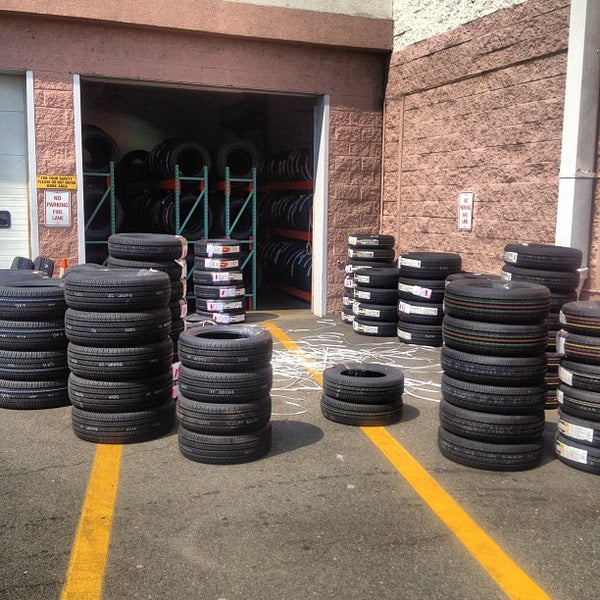
We recommend checking air pressure once a month, and before a long trip. Whether you have a full-sized or mini-spare, make sure that it is properly inflated as well.
Always inflate your tires to the recommended pressure listed by your vehicle's manufacturer. This information can be found in the owner's manual and often on a placard located in the vehicle's door jamb, inside the fuel hatch, or on the glove compartment door.
Air expands when it's hot and contracts when it's cold. For accurate pressure, always check the pressure when the tires are "cold" - at least three hours after the vehicle has been stopped and before it has been driven one mile. It's best to inflate your tires in the morning before the day's heat.
For example, it is possible for a passenger tire initially inflated to 35 psi to lose 1/2 psi per month. A substantial, seasonal temperature change can also affect inflation pressure, with cold ambient temperatures causing effectively lower air pressure.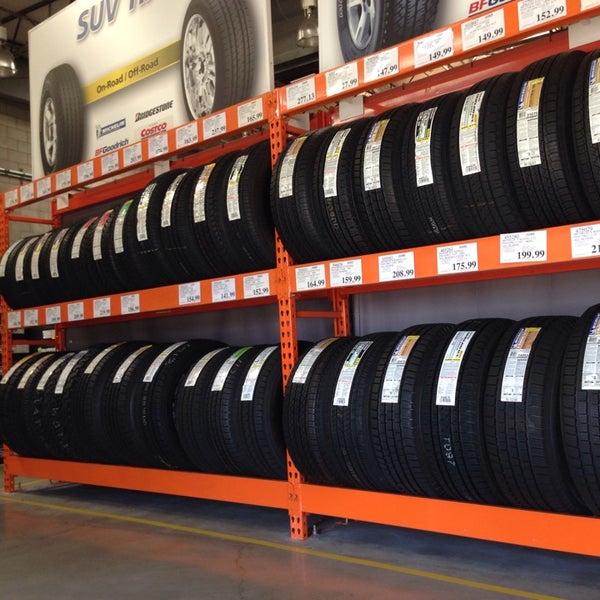
The tire's valve is a very important maintenance item in terms of keeping the inflation air in your tires. These valves are ordinarily rubber, can deteriorate over time, and should be replaced when you buy new tires. At high speeds, a cracked, deteriorated rubber valve stem can bend from centrifugal force and allow air loss.
The valve cap is likewise an important item. Buy some good quality valve caps that can contain the inflation air should the core of the valve fail for any reason. Valve caps also keep out moisture, which could freeze and in turn depress the valve core, causing loss of air. The cap also keeps out dust and dirt particles, which could also interfere with the proper operation of the valve core and cause loss of air.
Purchase a good pressure gauge and check it for accuracy with your tire dealer.
Beware of public gauges at the gas station. They are often abused and unreliable.
The final decision to install a tire on a vehicle will be made by the Costco tire center manager or supervisor.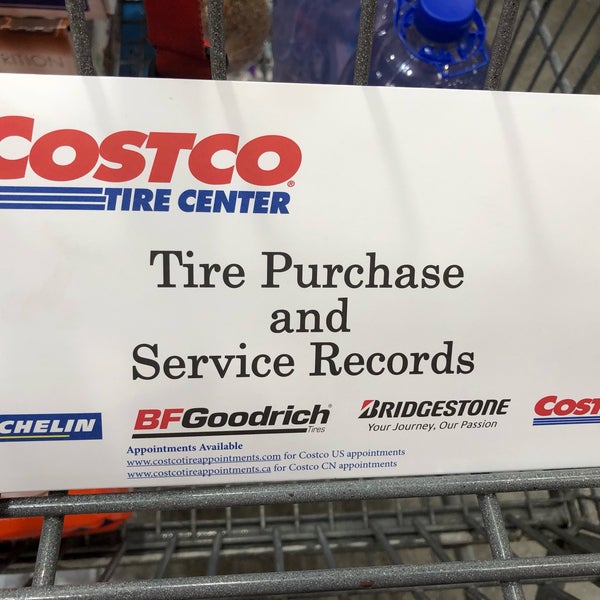 The tire must meet all vehicle manufacturers’ safety standards and specifications.
The tire must meet all vehicle manufacturers’ safety standards and specifications.
Back to Top
When you select a pair of replacement tires in the same size and construction as those on the car, you must put them on the rear axle. A single new tire must be paired on the rear axle with the tire having the most tread depth of the other three.
A single new tire must be paired on the rear axle with the tire having the most tread depth of the other three.
Proper inflation is the single most important part of tire care. The inflation pressure on the side of the tire is the MAXIMUM operating pressure. It is not necessarily the right inflation for your vehicle. Always use the inflation recommended by the vehicle manufacturer. You can find it in your owner's manual, posted on the edge of the driver's door, on a doorpost or on the inside of the glove box door. Always check inflation when tires are COLD: when the vehicle has been driven less than 1.6 km or one hour or more after driving. Use a good quality tire gauge. Note: It is natural for radial tires to have a slight bulge in the sidewall at their proper inflation pressure. Check or adjust inflation every few weeks, before any long trip or if traveling with a heavy load.
A vehicle is said to be properly aligned when all suspension and steering components are sound and when the tire and wheel assemblies are running straight and true.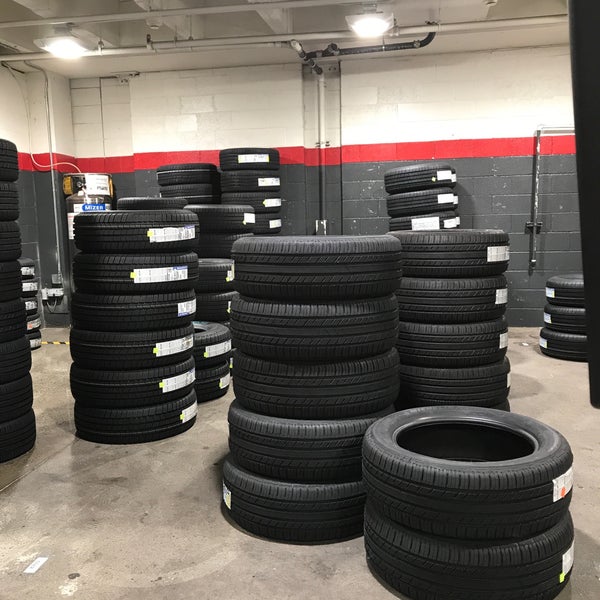 Proper alignment is necessary for even tread wear and precise steering. Uneven front- or rear-tire wear, or changes in your vehicle's handling or steering response (i.e. pulling to one side) can indicate misalignment. Many vehicles today are equipped with rear suspensions that can be adjusted for alignment. Your vehicle may need a "front-end" alignment or a "four-wheel" alignment, depending on the symptoms you are experiencing. The moderate cost of having your vehicle aligned can more than pay for itself in tire kilometrage, performance and comfort.
Proper alignment is necessary for even tread wear and precise steering. Uneven front- or rear-tire wear, or changes in your vehicle's handling or steering response (i.e. pulling to one side) can indicate misalignment. Many vehicles today are equipped with rear suspensions that can be adjusted for alignment. Your vehicle may need a "front-end" alignment or a "four-wheel" alignment, depending on the symptoms you are experiencing. The moderate cost of having your vehicle aligned can more than pay for itself in tire kilometrage, performance and comfort.
Vibration is an indication that your car has a problem that needs attention. The tires, steering system and suspension system should be checked to help determine the possible cause and correction of the vibration. If left unattended, the vibration could cause excessive tire and suspension wear. It could even be dangerous.
Properly balanced tires are important for driving comfort and long tire life.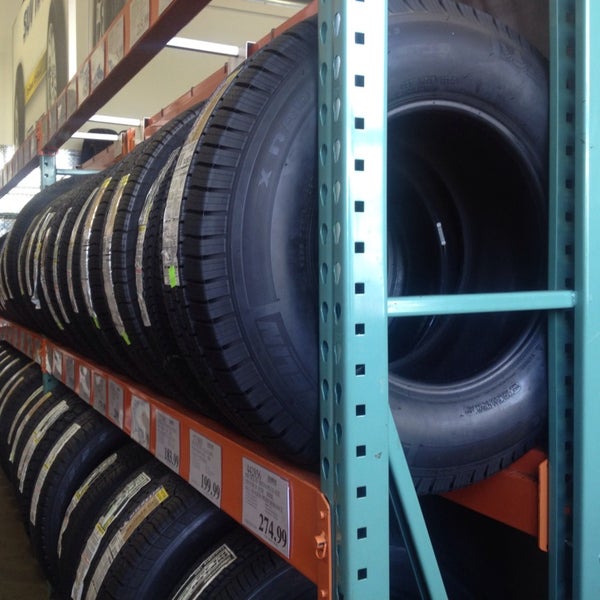 Unbalanced tires can cause vibration, resulting in driver fatigue, premature tire wear and unnecessary wear to your vehicle's suspension. Tires should be balanced when they are mounted on wheels for the first time or when they are remounted after repair. Tires should be rebalanced at the first sign of vibration or "shimmy." Vibration may also be due to misalignment or mechanical problems.
Unbalanced tires can cause vibration, resulting in driver fatigue, premature tire wear and unnecessary wear to your vehicle's suspension. Tires should be balanced when they are mounted on wheels for the first time or when they are remounted after repair. Tires should be rebalanced at the first sign of vibration or "shimmy." Vibration may also be due to misalignment or mechanical problems.
Your new tires will probably feel different from the tires that were replaced. Drive carefully as you become familiar with their performance and handling. Take special care when braking, accelerating, cornering, or when driving in the rain, because these are the times when the differences will be most noticeable.
Due to the variety of styles, construction features, tread compounds, vehicle applications, geographical conditions and driving habits, it is difficult to provide specific kilometrage expectancy.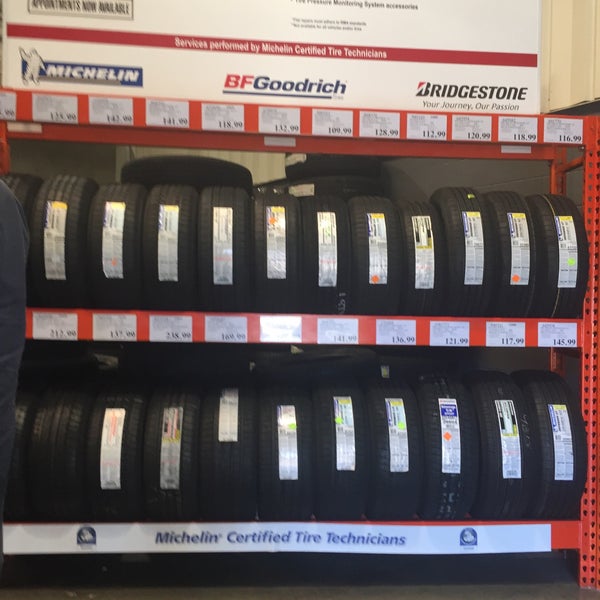 However, any tire wear concern should always be presented to your local Costco Wholesale tire center for further evaluation.
However, any tire wear concern should always be presented to your local Costco Wholesale tire center for further evaluation.
Never try to mount your own tires. Tire mounting is a job for the people who have the proper equipment and experience. If you try to do it yourself, you run the risk of serious injury to yourself as well as possible damage to the tire and rim.
Never choose a smaller size than those that came with the car. Tires should always be replaced with the same size designation -- or approved options -- as recommended by the vehicle manufacturer.
Tires of different size designations, constructions, and stages of wear may affect vehicle handling and stability.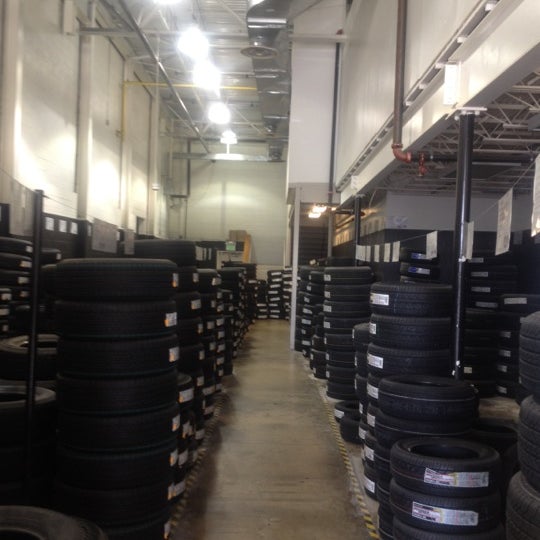 For best all-around performance, it is recommended that all tires be of the same size, construction (radial, non-radial), load capacity and speed rating.
For best all-around performance, it is recommended that all tires be of the same size, construction (radial, non-radial), load capacity and speed rating.
Tires often give their owners signs of problems in plenty of time to have them corrected. Learn to "read" these early warning signs and you can prevent many wear problems that shorten tire life by thousands of kilometres. Consult your Costco Wholesale tire sales associate for further information.
Many tires have tread wear indicator bars molded into the tread. When the tread is worn down to where you can see a solid bar of rubber across the width of the tread, it is time to replace the tire. Here is another simple test you can perform to measure tread depth on your tires. Place a penny into a tread groove with Lincoln's head upside down and facing you.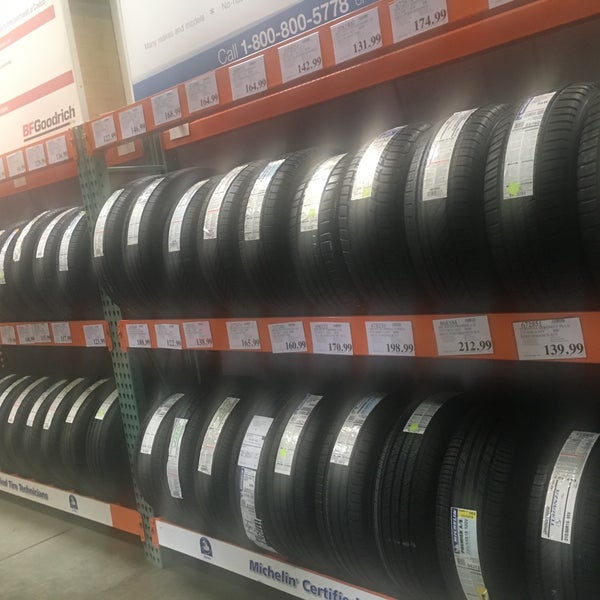 If you can see the top of the Lincoln's head, it is time to visit Costco Wholesale for a new tire.
If you can see the top of the Lincoln's head, it is time to visit Costco Wholesale for a new tire.
Regular and proper tire rotation promotes more uniform wear for all of the tires on a vehicle.
The final decision to install a tire on a vehicle will be made by the Costco tire center manager or supervisor. The tire must meet all vehicle manufacturers’ safety standards and specifications.
Back to Top
I have a 2011 Ford Focus and although the car itself is good quality, I have now ruined two tires in three months just by running over a screw.
Ford doesn't offer any road risk on their tires, so I'm pretty annoyed with Ford.
Both Costco and Discount Tires advise me to either replace all 4 tires or at least replace 2 tires. They also tell me that tire changes must be of the same speed rating.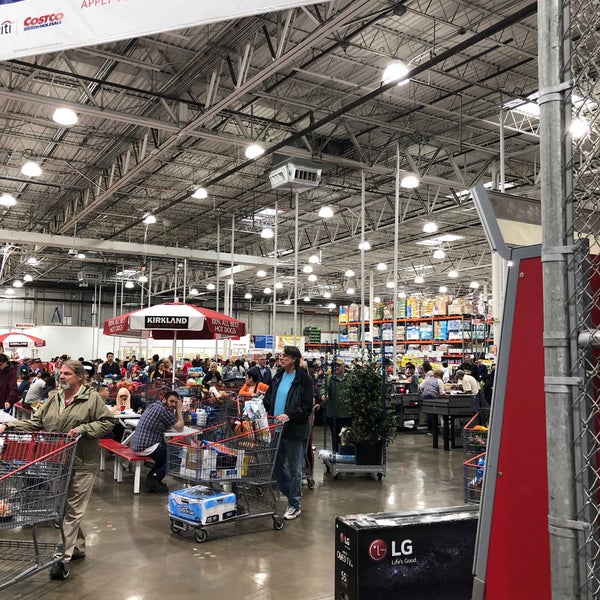
Discount will sell me ONE Yokohama Avid (touring with I think) but they advise against it. The Ford service representative does not offer any advice.
I'm very tempted to get one Yokohama because of the danger on the road and I'm trying to determine what effect one of the three different tires actually has.
Thank you.
Jerry Asher
2011-05-18 20:11:51 +0000
The answer is NO. You should never change one tire because each tire has its own performance characteristics.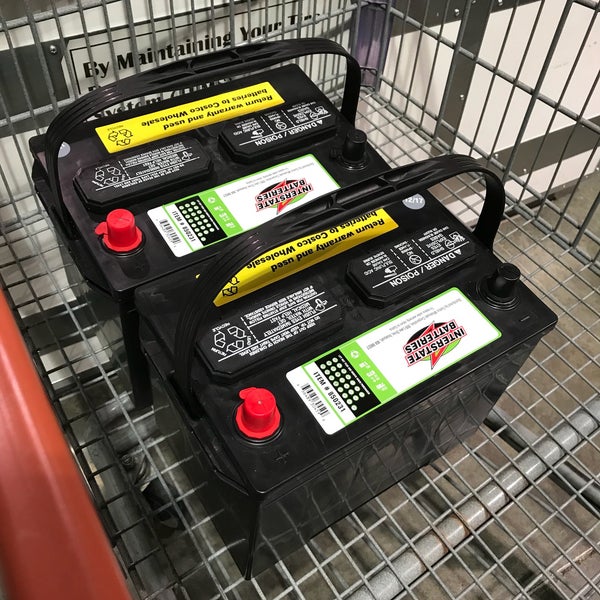 You may not notice this during your daily driving, but any unusual action such as turning to avoid an accident, turning or braking in a rain storm, etc. You may suddenly find that the car is doing something completely unexpected. Also, contact your insurance company - they may decide that because the car has been "improperly maintained", your insurance coverage will not be good in the event of an accident with the wrong tires.
You may not notice this during your daily driving, but any unusual action such as turning to avoid an accident, turning or braking in a rain storm, etc. You may suddenly find that the car is doing something completely unexpected. Also, contact your insurance company - they may decide that because the car has been "improperly maintained", your insurance coverage will not be good in the event of an accident with the wrong tires.
Personally, I wouldn't drive with different tires front and rear. Even similar tires will behave differently.
A simple screw piercer should be repairable unless you continue to ride flat.
Sourcechris
2011-06-02 17:49:19 +0000
It's not recommended to just replace one, but unless you're pushing 9/10 of your car's power, you'll probably never notice a difference. When I worked in construction, nobody did a complete set or even a replacement set of axles.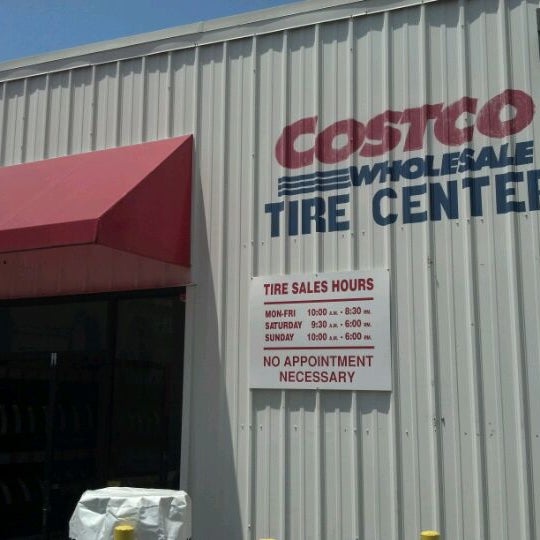 When your tires break as fast as all loose nails lost on construction sites, it's silly to replace them all every time. At a minimum, you get mismatched tread wear, and more typically, you get tires from a different brand, since the make/model/size the customer is buying will never be available even after a couple of months. Sigh.
When your tires break as fast as all loose nails lost on construction sites, it's silly to replace them all every time. At a minimum, you get mismatched tread wear, and more typically, you get tires from a different brand, since the make/model/size the customer is buying will never be available even after a couple of months. Sigh.
Brian Knoblauch
2011-05-22 19:54:24 +0000
The real answer is yes and no. It is perfectly safe to drive four completely separate tires as long as the tires on the same axle are the same size. It would probably be nice to get tires with the same tread so that they wear evenly.
As far as the performance that Chris was talking about, there is an additional property between the tires. So if one of them had no grip, you would have 50% performance, but if one of them was snowy and the other was summer, you would be great in no snow conditions.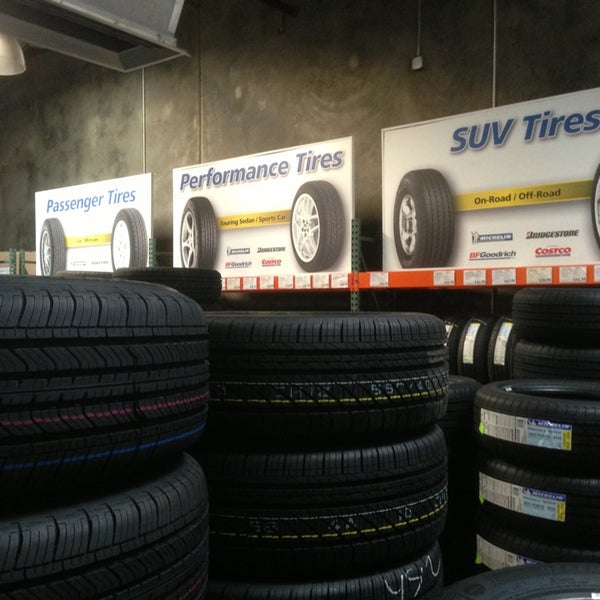
In my opinion, get the right tires for each axle to save yourself looking like an idiot.
SourceEric Fossum
2011-05-19 14:20:25 +0000
If you've just run over a screw, you should be able to fix a tire. I've done this before and they basically glue a rubber plug into the hole.
As others have said, it's usually not a good idea to have tire mismatches. Rules will vary depending on where you are, but some countries (notably France) do not allow mismatched tires on the same axle. The UK allows them, but they must all be the same size and speed. Obviously I don't know what the rules are in the US or if they vary from state to state. Axle mismatch is less of an issue (my car has different tire sizes between the front and rear axles as standard), but it's best to avoid it if you can. Most tire dealers here will insist on installing new tires on the rear axle if only two are being replaced.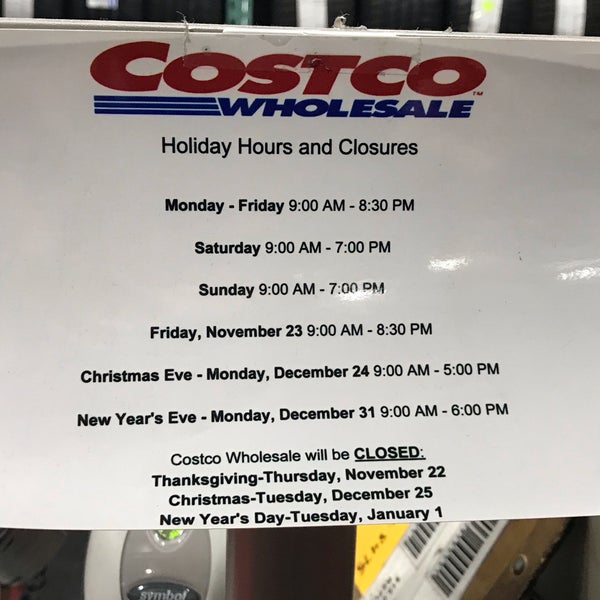
Nick C
2018-01-26 04:24:09 +0000
The problem is greatly exacerbated on vehicles that are AWD (not 4WD transfer case) that use viscous couplings.
Moving the worn tires to the rear and buying two nice new fronts will overstate the viscosity of the clutch, and can cause a VERY expensive part to fail. Ask any late model Ford Explorer owner about this particular heartache...
This is a specific exception, and not exactly a direct answer to the OP's question. However, this is and an example where replacing all four tires with exactly the same model (or at least diameter) is reasonable considering wear.
Also, I see no reason why quality tires of the same final diameter cannot be replaced, whether for an axle, a sidewall, or a car. Granted, a snow-and-ice Nokia or a General express hypermiler isn't the same as a Michelin Pilot Zero summer gumball - but I'm sure any all-season tire of the same diameter and size is safe enough on a discreet street SUV, van or sedan.
Steve Racer
2018-01-26 00:50:15 +0000
Can't comment on MooseLucifer's post (not enough reputation). Here are my two cents:
Tires on the same axle should always be the same size, ideally all 4 are the same.
The difference in tire wear across the entire axle has little effect on performance, because the same tires with different tread depths will have slightly different diameters, although the difference is quite small (twice the starting tread depth if it is bald).
Tires of different axle sizes are not recommended. Large ROTATE tires are slower than small tires at equivalent speeds, which means that when driving in a straight line, your differential will constantly rotate, causing it to wear out faster. The discrepancy will also negatively affect the "position" of your car.
That's why you don't need a donut on the drive axle. The donuts are much smaller than stock tires (also not rated for around 50 mph). It is wise to use donuts wherever necessary to get the car home and / or to the store, nothing more. Tires are inferior to standard tires in every respect.
The donuts are much smaller than stock tires (also not rated for around 50 mph). It is wise to use donuts wherever necessary to get the car home and / or to the store, nothing more. Tires are inferior to standard tires in every respect.
Tires of different sizes between the front and rear axles are acceptable, but will have little effect on ride quality. As a rule, larger and/or larger diameter tires have a better damping effect. Bumpy surfaces will cause the front and rear axles to behave slightly differently, which will become more problematic at increasing speeds.
This is my 2...5 cents. I'm only here because Wal-Mart managed to install the wrong tire, and you know what? Yes, different sizes! Drive carefully and smart!
SourceZach Rightmyer
2020-03-28 18:19:27 +0000
If all tires are the same diameter, it will be very difficult to tell the difference.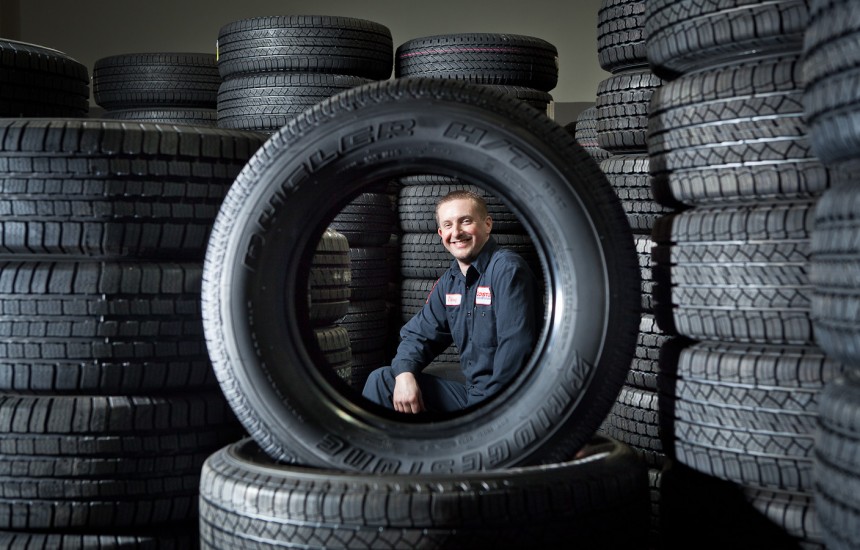 Of course, in bad weather it may not be very good. They say to put two good quality new tires on the rear axle to avoid spinning in extreme conditions.
Of course, in bad weather it may not be very good. They say to put two good quality new tires on the rear axle to avoid spinning in extreme conditions.
Robert Gingold
2016-06-14 09:31:49 +0000
DT ik....NO... And always turn tires and never put donut tires on the front if it's front or rear wheel drive.
SourceTimothy Crowder
That's how strange today's topic sounds :) In fact, there are two topics here, and they are basically far from each other, they're just small and that's why I decided to combine them in one article :) Both topics are from the category ... I tried yourself, share with others :) So, first about the pillows. Quite recently we tried to discuss the topic of mattresses, as well as bed linen, pillows, etc. Well, we haven't bought a new mattress with memory foam yet. But I finally made up my mind about pillows. I thought for a long time about which pillows to buy. There were three options: bamboo, eucalyptus (Tencel), or memory foam. Pillows, I must say, are very annoying. Maybe I really became picky in my old age :) The doctor said that in order for the body and spine to have a good rest during the night, the spine should lie, as it were, in the same plane, without bending.
Well, we haven't bought a new mattress with memory foam yet. But I finally made up my mind about pillows. I thought for a long time about which pillows to buy. There were three options: bamboo, eucalyptus (Tencel), or memory foam. Pillows, I must say, are very annoying. Maybe I really became picky in my old age :) The doctor said that in order for the body and spine to have a good rest during the night, the spine should lie, as it were, in the same plane, without bending.
Therefore, only the ears should lie on the pillow :), and the shoulders (shoulder if you sleep on your side) should lie on the mattress. Since if you press the pillow with your shoulder, it will flatten and then an unsuccessful angle for the spine is formed.
Well, in general, I didn't like the pillows that I bought at all, and therefore I threw them away several times a year, testing different manufacturers and so on. Because they were flattened to death in just a couple of weeks. And washing them did not help much to perk up again.
So I had a fear of bamboo and eucalyptus pillows, that they would also quickly flatten and make me uncomfortable again. After all, these pillows are basically exactly the same as ordinary pillows, just the stuffing material is more useful and environmentally friendly.
So I made a drastic move and bought memory foam pillows. But since I had no experience of sleeping on such pillows at all, I could not choose something specific from the huge variety of these pillows today. There are a lot of pillows, all different, quite expensive, and everyone shouts that they are the best. And I don’t know what my body thinks about this :)
So here I obeyed my toad, she choked me into buying an expensive pillow, which is not known how different from a cheaper one, and it is not known whether I would like to sleep on such pillows at all, and bought simpler pillows, lower-middle price category, and even and in Costco! I decided to test a simple pillow first and understand on it whether I like to sleep on such a pillow, and also whether I need any other bells and whistles in it or not.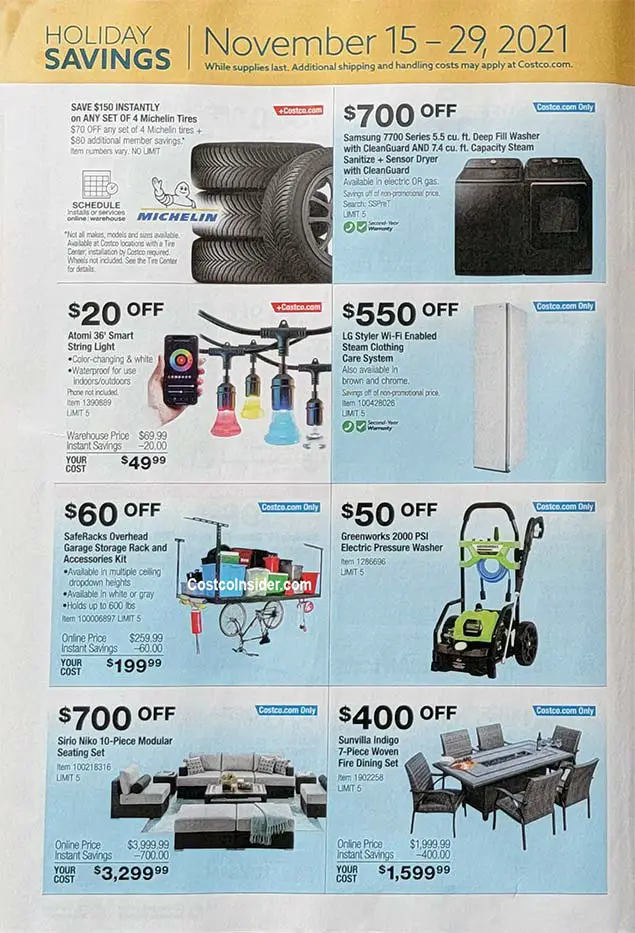
These pillows are not exactly simple, they even have a cooling layer and different densities, so in general it should be good. I have already read all sorts of recommendations on memory foam on the Internet, and it just said that this is generally a super modern material, but it has two jambs.
The first joint is that it is quite hot. That is, on a hot day or with powerful batteries, you can sweat :) Therefore, such a gel “cooling” layer is laid in high-quality mattresses and pillows, which removes this effect of overheating. And the second joint is the smell. A new mattress and pillow will smell for at least a couple of days. Which turned out to be pure truth :)
That's why we let our pillows lie open without us and they faded very quickly, now we almost don't feel the smell (although maybe because we're used to it :). In any case, as the manufacturers say, this smell is harmless and not nasty. I can’t say anything about the harmless, but it’s true about the harmless :) Although the taste and color with comrades are not super :)
Well, in Costco there was a choice of two pillows with the same filling and price, and they differed only in shape.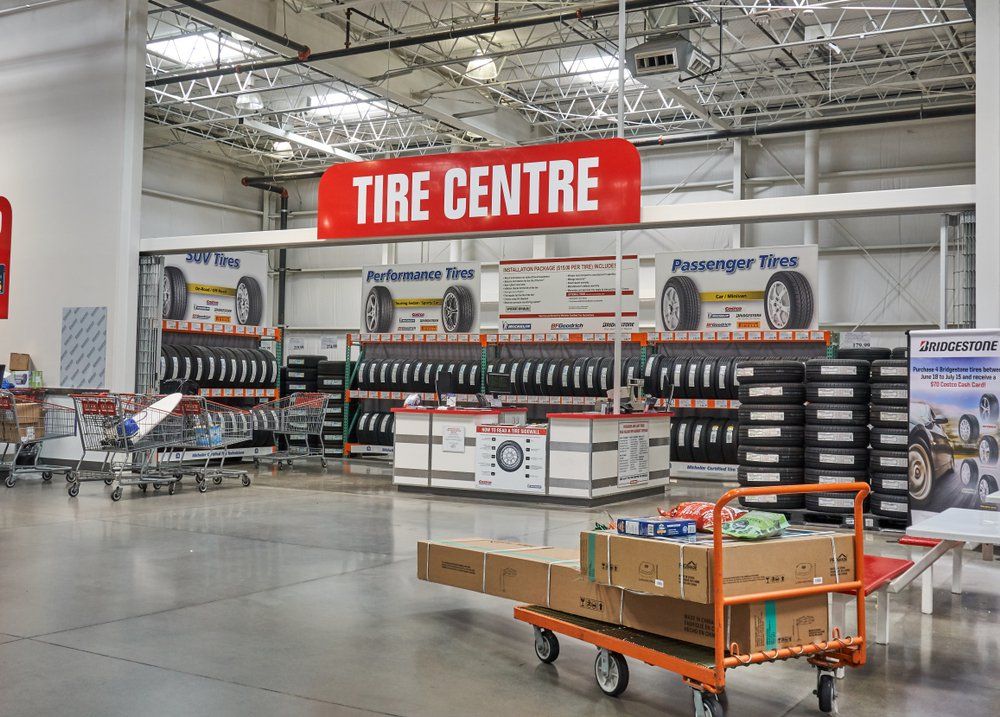 One pillow is a classic rectangular shape, and the second one has a notch on one side, apparently so that the shoulder (or neck) fits comfortably there and does not pretend to fit on the pillow and thereby flatten it :)
One pillow is a classic rectangular shape, and the second one has a notch on one side, apparently so that the shoulder (or neck) fits comfortably there and does not pretend to fit on the pillow and thereby flatten it :)
whichever one I prefer, and I decided to try something, everything was completely new for me at once, and I took the one with a notch :) The pillow was inexpensive, something less than 30 bucks. By the way, these pillows cost more than a hundred bucks apiece.
Well, what can I say, we liked these pillows. Indeed, the recess in the pillow is very convenient for placing your shoulder there when you sleep on your side. The shoulder fits comfortably there, and the head rests on the pillow and has a lot of room to maneuver, because there is still a lot of room on both sides. And the spine is very classically laid perfectly flat.
Also, the elasticity of the pillow is very pleasing. It does not press through to the base, but keeps your head always on the same level. It is comfortable on both the ear, and the cheeks and everything else! :) Even if you bury your whole face in it, it is very comfortable :)
It is comfortable on both the ear, and the cheeks and everything else! :) Even if you bury your whole face in it, it is very comfortable :)
The head seems to be in weightlessness and you sleep like on a cloud :) By the way, this is noted by all people who sleep on memory foam mattresses, especially if the mattress is not the hardest. You do not feel your body at all, its weight and its curves. You're in a cloud :)
Maybe the cooling gel helps, or maybe it's not so hot here, but there is no heat or warming effect from the pillow, and therefore the head does not sweat and there are no unpleasant phenomena. And the cervical spine really felt better, there are no strains. Some positive emotions :)
So we will definitely take the next mattress with memory foam, well, when we take a mattress, then maybe we will take more abruptly pillows. Although these pillows from Costco have a 5-year warranty! For me, if they don’t flatten for at least half a year, then I will already pay back all the costs of pillows, because ordinary pillows had to be changed more often, and the amount for them per year was more than for these new pillows :) In general, I recommend that you try this too New, I hope you like it.
They say that such pillows are also good for allergy sufferers, because they do not collect dust, as well as to improve blood circulation and for deep sleep, and a comfortable rest in general. You can rummage around on the Internet yourself :) I think when these pillows are bundled with the same mattress, it will be generally super! But I'm not sure that the mattress should be taken in Costco, although there are very good prices for them. I still lean more towards Serta.
By the way, a stall has been opened in Chinook mall (on the way from Target to Nordstrom), where they started selling bamboo goods. So far, these are pillows, bed linen and small towels. All this, of course, is very cool, especially bed linen, soft and silky, and so useful. But the prices are not healthy at all :)
Well, now, from the topic that I bought pillows in Costco and cheap mattresses there, let's move on to the topic of winter tires for the car, because in my opinion it is not bad in Costco, in anyway for the price :)
Since Seryoga does not care about cars and tires at all and he is indifferent to them, I had to deal with them myself. After all, I'm afraid to drive an expensive Odyssey in winter in any weather. So before, when there was quite bad winter weather, I could sit at home and not take risks once again, but now you can’t sit it out if you need to go to the airport to take Seryoga to or from work.
After all, I'm afraid to drive an expensive Odyssey in winter in any weather. So before, when there was quite bad winter weather, I could sit at home and not take risks once again, but now you can’t sit it out if you need to go to the airport to take Seryoga to or from work.
Therefore, I began to insist that winter tires would not hurt us :) And those who take the initiative should implement it. I had to start to understand the topic, such as wheel sizes, which tires are better or worse, and other details. And we still didn’t have simple wheels, but with TPMS (pressure sensors).
Of course, the easiest way was to go and put the wheels in a Honda dealership, but this procedure cost 1800 bucks, and somehow this figure was very annoying, like there were diamond wheels or something! Therefore, I began to look for cheaper, but high-quality options, they even called to find out how much such wheels cost in America. Like hit the road for a couple of days in Kalispel or Grand Falls in Honda's American dealerships and put everything there cheaper.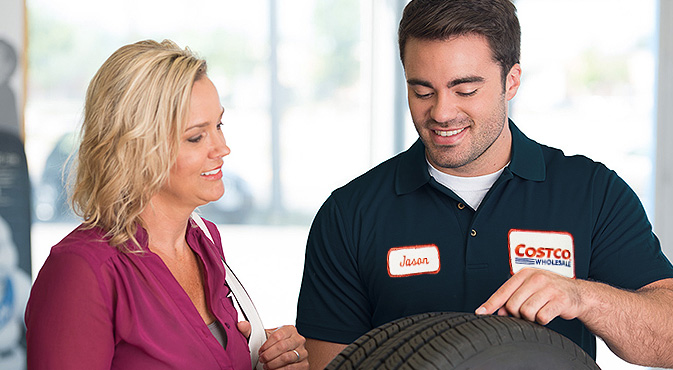
But the price showed that, of course, the wheels are cheaper there, but add to this the difference in the dollar exchange rate, gasoline, accommodation and food, and the price will be no less than in Calgary, so why fence the garden :) And then they can also at the border slap the tax, then this trip will be completely useless.
Well, after a lot of research, I turned my attention to Costco, and I liked their offer. They have good Michelin tires with discs, pressure sensors, and installation, as well as a lifetime (for rubber:) service cost about 1100 bucks, which, after the 1800 requested by Honda, seemed like a gift:)
The "lifetime for this rubber" service includes:
Mounting
Lifetime balancing
Lifetime rotation
Lifetime flat repair
Lifetime air pressure checks
New rubber valve stem
Nitrogen inflation
Costco Wholesale’s road hazard warranty
How do you experts in cars (probably much bigger than me, poor blonde woman:) think this is a good dil? Do any of our readers use this wheel service in Costco? Is it really convenient to use it and is it really all there for free?
Do you also put winter tires on your cars? And do you put it with rims or do you remount the wheels twice a year? What is more profitable? And how do you do all this, like you buy tires separately, separately disks in those places where it is as cheap as possible, and then you yourself or someone mounts it all for you, or go to a specialized company where you get everything from this office?
Probably not only me, but also our other readers who are not experts in cars and local specifics, we will be grateful to specialists and experienced car owners for your answers!
And one more small one, I don’t know if it’s a bonus or evil, but they say they sell cheap cigarettes in Costco :) We don’t smoke ourselves and therefore I don’t have buying experience, but I give you information from a person who is a heavy smoker and opened this business: ) He said that cigarettes are sold in an inconspicuous window at the entrance to the store (before you went to the trading floor, like in a dressing room).